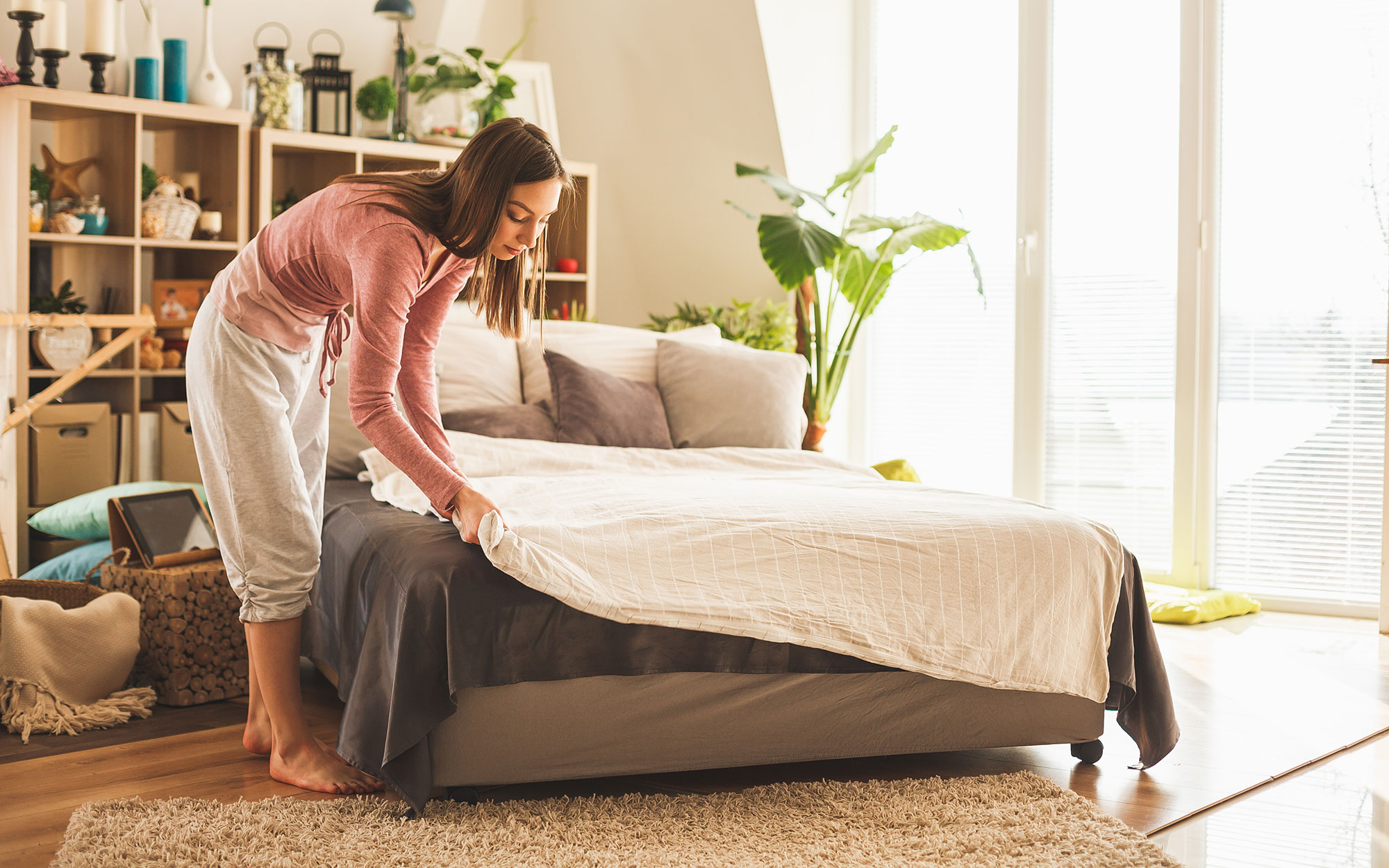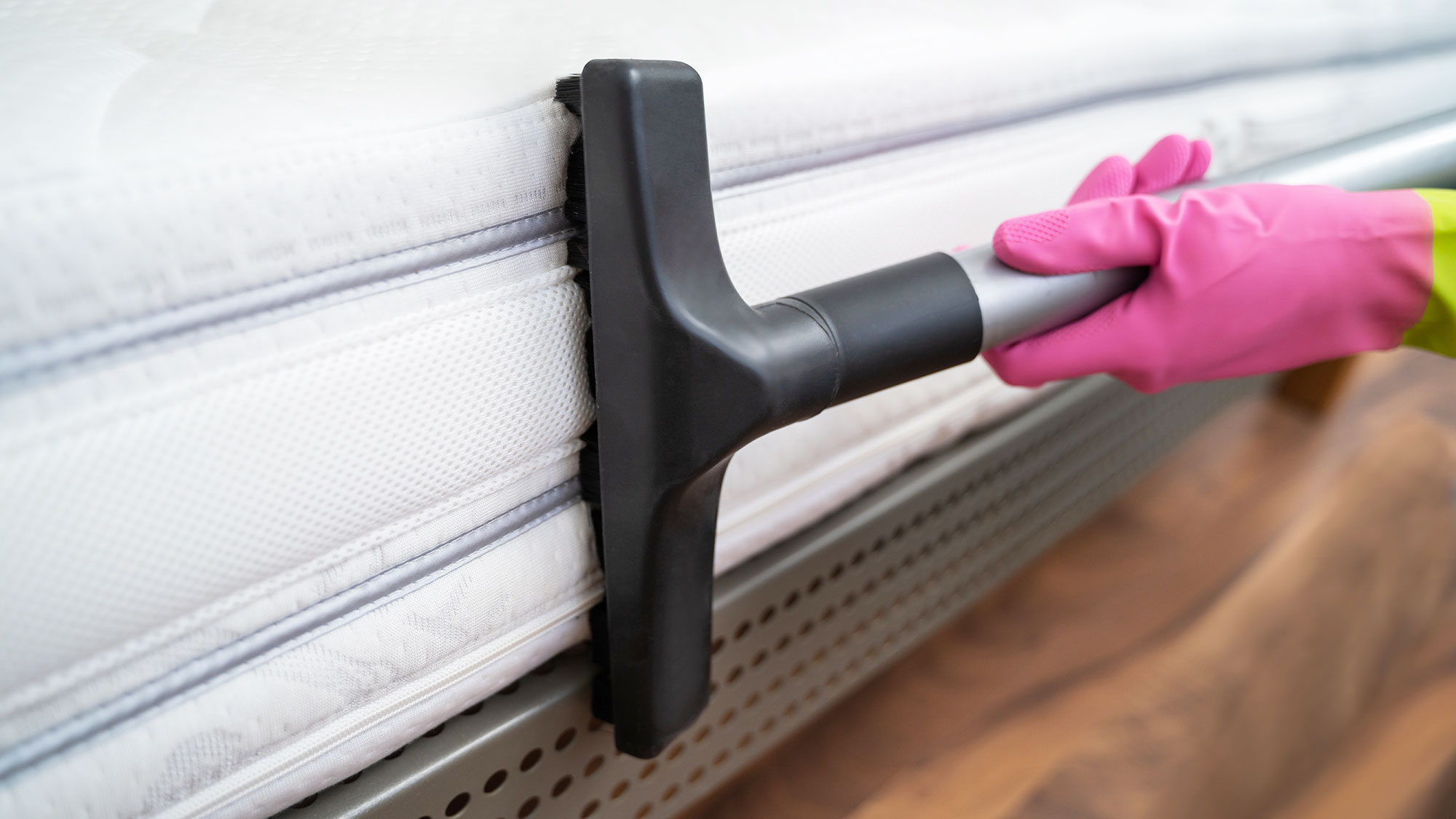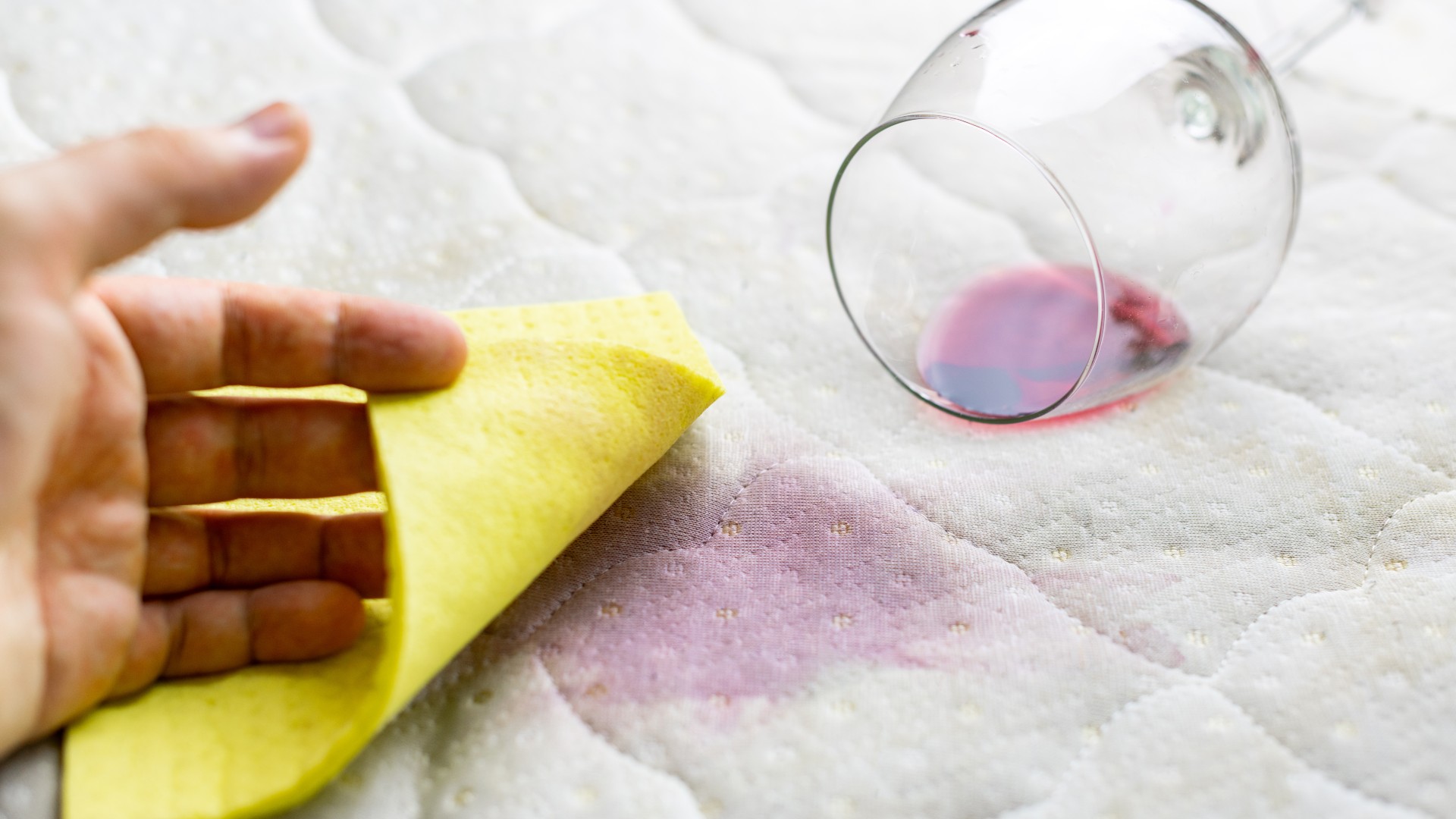Why you should clean your mattress this weekend - and how to do it in 4 simple steps
We spend around one-third of our lives in bed - so make cleaning your mattress a priority. Here's how to tackle it...


When was the last time you cleaned your mattress? A few months ago? Last year? Or even - gulp - never?
Whilst we regularly vacuum our floors and wipe-clean our bedside cabinets, mattresses are one of the most neglected items when it comes to our list of household chores, according to Deyan Dimitrov, CEO of Laundryheap.
‘We often focus on washing our bedsheets and our duvets, but mattresses can harbour bacteria, dirt and dust mites,' he says, adding: 'Many of us are unsure of how to properly clean our mattresses, simply because there’s lots of conflicting advice.’
- Best mattress toppers: Upgrade your bed and enjoy a sumptuous night’s sleep
- Best sleeping positions: avoid pain and sleep better
- How to fall asleep fast: 11 science-backed hacks
Moreover, mattresses can also start to smell over time, thanks to a build up of dead skin cells and sweat - despite the fact that the aren't directly exposed to your skin when you sleep.
And that's not the worst of it. Deyan adds: 'If you don’t clean your mattress or change your sheets regularly enough, you could be at risk of attracting bed bugs, which are attracted to warmth and dead skin cells.’
Whilst bedbugs don't transmit diseases, their bites can become infected - and even cause an allergic reaction in some people.
So just how often should we clean the place where we spend around one-third of our lives?
Get the Fit&Well Newsletter
Start your week with achievable workout ideas, health tips and wellbeing advice in your inbox.
‘As we usually cover our mattresses with a mattress topper, sheets and a duvet, it’s reasonable to only clean your mattress every six months,’ advises Deyan.
With that in mind, if your mattress is overdue a good clean then make this the weekend that you strip the sheets, roll up your sleeves and get stuck in. Below Deyan shares his top tips for both cleaning and caring for your mattress.
How to clean a mattress
- Step 1: use a vacuum cleaner
Vacuuming your mattress will help to get rid of any dirt, crumbs, hairs or mess that shouldn’t be on your mattress. It will also help to get rid of dust and dead skin cells.
‘If you leave dust and dirt to build up, this could trigger an allergic reaction such as itchy eyes or a sniffly, blocked nose. It could also lead to skin rashes,’ says Deyan.

- Step 2: remove any stains
Whist stain removers can be useful here, nothing works as effectively as vinegar and hot water.
To get rid of persistent mattress stains, apply a good amount of white vinegar directly to the stained area. Next take some hot, soapy water and a cloth, and begin to scrub at the stain. Sprinkle with soda crystals and leave for 15 minutes. When the soda crystals are dry, vacuum the residue up.
Your stain should now be gone, however if you have a particularly tough stain, apply the white vinegar and then soda crystals directly after. This will result in a fizzing action. 'Leave for five minutes and then wipe away with a hot, damp cloth. Make sure you vacuum up all the residue once it’s dry,’ says Deyan.

- Step 3: Steam the mattress
Steam cleaning your mattress is much simpler and easier than any other cleaning method, but just as effective. Don’t panic if you don’t have a steam cleaner - you can simply use an iron with a steam setting. If you’re using the latter, make sure you’ve filled with water and can operate the steam setting. Simply work the steam cleaner or steam iron all over the mattress until you’ve covered each area and leave to dry.
- Step 4: Use a freshener
Finally - and this is optional - use a fabric freshener all over your mattress to keep it smelling fresh, or else use fabric-safe disinfectant diluted in some water. Spritz over the mattress and leave to dry.
When the mattress is touch-dry, you can put your fresh clean sheets and bedding on. If you haven’t already, buy a mattress cover to prevent further staining.
How often do I need to flip my mattress?
If your mattress is four years old or less, it only needs to be flipped once every six months. If your mattress is older than four years, give it a flip every three months.
Deyan adds: ‘Although this does help with the hygiene of your mattress, it’s more about the comfort of your sleep and making sure your mattress is giving you consistent support whilst you’re asleep.’
How often should I change my mattress?
‘It’s generally recommended that you change your mattress every eight years,’ says Deyan.
Why? He explains that your mattress endures a lot of wear and tear over the years.
‘It’s not just about hygiene but your overall comfort. If you’re sleeping on a worn-out mattress, you might wake up with stiff joints, a bad back, or aching muscles. You might also find it difficult to sleep or get comfortable.’
Lucy is a freelance journalist specializing in health, fitness and lifestyle. She was previously the Health and Fitness Editor across various women's magazines, including Woman&Home, Woman and Woman’s Own as well as Editor of Feel Good You. She has also previously written for titles including Now, Look, Cosmopolitan, GQ, Red and The Sun.
She lives and breathes all things fitness; working out every morning with a mix of running, weights, boxing and long walks. Lucy is a Level 3 personal trainer and teaches classes at various London studios. Plus, she's pre- and post-natal trained and helps new mums get back into fitness after the birth of their baby. Lucy claims that good sleep, plenty of food and a healthy gut (seriously, it's an obsession) are the key to maintaining energy and exercising efficiently. Saying this, she's partial to many classes of champagne and tequila on the rocks whilst out with her friends.
-
 I have bunions, but I can't feel them with these affordable Skechers walking shoes—now 22% off at Zappos
I have bunions, but I can't feel them with these affordable Skechers walking shoes—now 22% off at ZapposDeal A generous toe box makes the Skechers Max Cushioning Arch Fit Areena perfect for wide feet
By Lou Mudge
-
 Can't do a sit-up? A trainer says you should do these chair-based core exercises instead
Can't do a sit-up? A trainer says you should do these chair-based core exercises insteadNo sit-ups or planks
By Jennifer Rizzuto